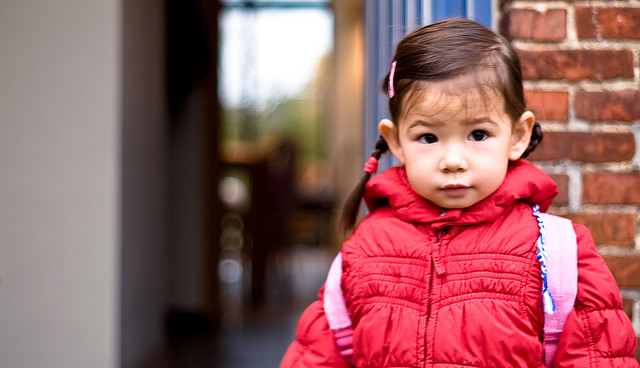Starting school for the first time can be both an exciting and nerve-wracking experience for a young bilingual child. Aside from possible language barriers, cultural differences may often play a role. Things that are done in the classroom often do not match what a child is used to at home and this can make a bilingual child feel especially uncomfortable and insecure.
It is important to give bilingual children a lot of time to get used to the classroom setting. Although this is true for all children coming to school for the first time, for bilingual children there are some unique elements which can help them transition more successfully.
Below are tips to make the transition go more smoothly for bilingual students in your classroom:
- Language appreciation: There is nothing more welcoming for a bilingual child than knowing that their home language is respected and appreciated in the classroom. Even if you don’t know how to speak in your students’ home languages, make sure that each student knows that their home language is important and integral to the classroom setting. You can do this simply by showing a smile when the child speaks in the home language, learning a few key words in their language, or having multilingual posters on the wall and bilingual books around the room.
- Cultural differences: Customs, attitudes and behaviors can be very different between cultures. It is important that children are given the chance to explore these differences. Some children are taught to show respect to adults by looking down, others are taught that looking an adult in the eyes is a sign of respect. Some are taught that it is important to comfort another child who is upset while other children are taught that they should give a grieving child space and alone time to recover. It will take time for bilingual children in the classroom to learn how things are done in the new setting. You can help them by talking about American customs and cultural habits.
- Physical comfort: Not all children are comfortable being in a classroom. Many are not used to sitting in chairs and would prefer to stretch out on the floor when doing school work. Some children may not be familiar with bookcases lined with books. They need to be encouraged to pull out a few so that they can feel comfortable with the process. The way we decorate our classroom walls can overwhelm children if it is too full and colorful. Perhaps consider decorating the walls during the school year with the help of your students so that they can be active participants in the process. Most importantly, take time to help each student get familiar with the different parts of the classroom and then let each take the time needed to make it feel comfortable.
- Home-School connection: It is important for bilingual students to know that their experiences in school are simply part of a continuum which includes friends, family and experiences outside the classroom. Bilingual students who feel that the school experience is very separate from their home life (and possibly opposed to it) may feel that they need to choose one or the other. To make sure that this does not happen, make a continual effort to include your students’ parents in as many ways as possible. This would include letting parents know the benefits of bilingualism and encouraging them to keep speaking their home language with their children. This, in itself, will help families understand that their language and customs are not discouraged or looked down upon.
All children need a transition period when first entering school. Bilingual children, in particular, need clear and dedicated teacher support for their home language, customs and traditions.
This doesn’t mean that things won’t feel different and strange in the new classroom. Teachers are not expected to learn how to speak every language spoken in the classroom. It simply means that teachers make a special effort to show support and appreciation for each bilingual student’s home language and customs. By doing this right at the beginning, the year is sure to progress more smoothly and comfortably for each bilingual student.
Photo credit: tienvijftien
Please share some of the ways that you welcome new bilingual students into your classroom.

